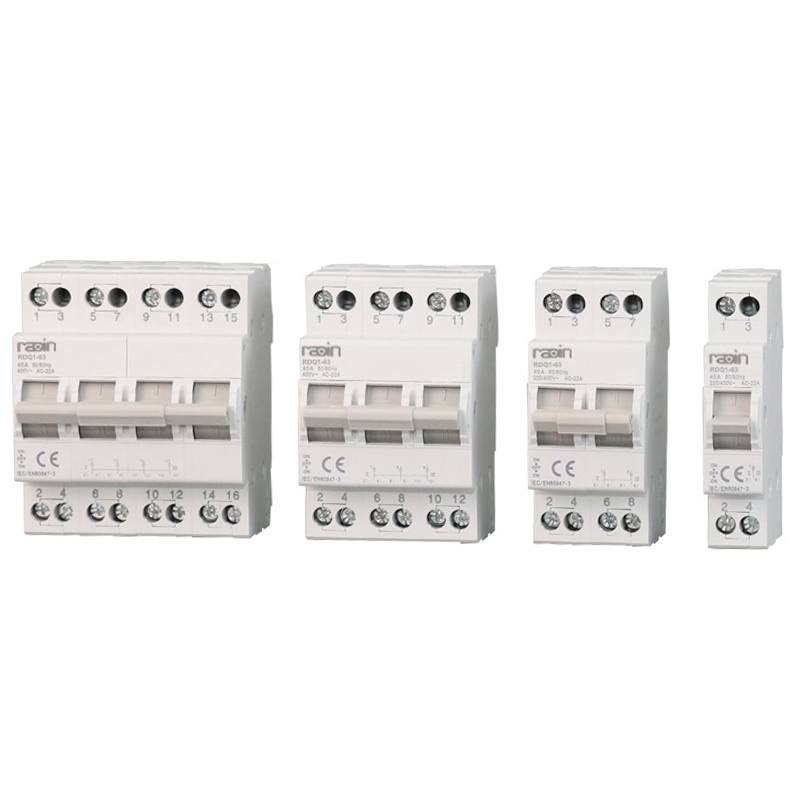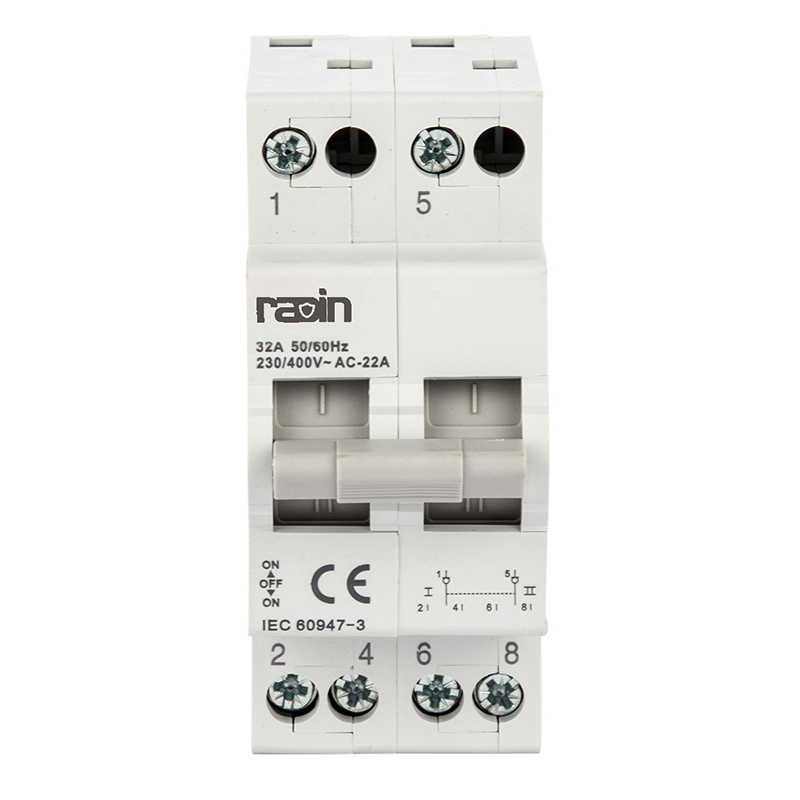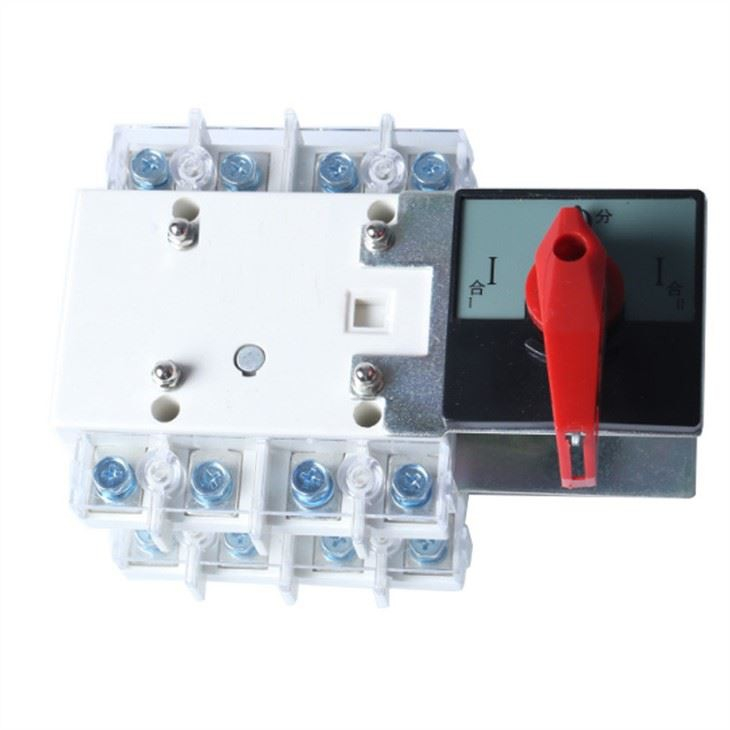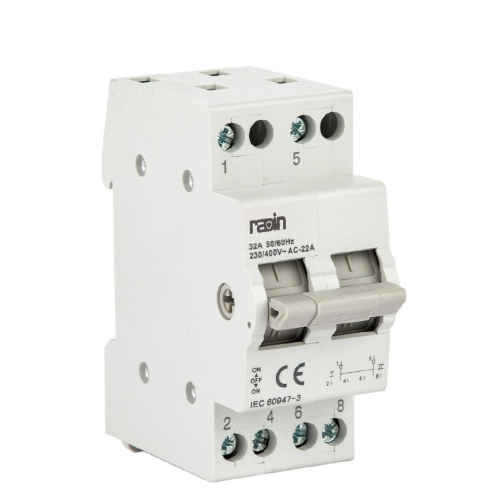- All
- Product Name
- Product Keyword
- Product Model
- Product Summary
- Product Description
- Multi Field Search
Views: 0 Author: Site Editor Publish Time: 2025-10-23 Origin: Site








In the realm of electrical systems, ensuring a reliable power supply is paramount. One critical component that facilitates this is the Manual Transfer Switch. This device allows users to safely transition between primary power sources and backup generators or alternative power supplies. The purpose of this article is to delve into the functionality, significance, and applications of manual transfer switches (MTS), providing a comprehensive understanding of their role in maintaining reliable power supply across various settings. By exploring the operation, benefits, and considerations for installation and maintenance, readers can enhance the resilience of their electrical infrastructure and mitigate the impact of power disruptions.
A manual transfer switch (MTS) is an electrical device used to switch power sources between the main utility supply and a backup generator or alternate power source. It allows users to manually select which power source to use, enabling seamless transition during power outages or maintenance activities. Typically installed near the main electrical panel, a manual transfer switch ensures safe and reliable switching of power without the risk of backfeeding or overloading the electrical system. It consists of a switch mechanism housed in a sturdy enclosure, along with appropriate wiring connections to link the utility supply, generator, and electrical loads. Manual transfer switches are essential components in backup power systems, providing a simple yet effective solution for maintaining continuous power supply in residential, commercial, and industrial settings.

The importance of manual transfer switches (MTS) in electrical systems cannot be overstated, as they serve as critical components for ensuring uninterrupted power supply during various scenarios, including power outages, maintenance, or emergencies. Here are several key reasons why MTS is essential:
Safety: MTS ensures the safety of both individuals and electrical equipment by preventing backfeeding, which occurs when power from a generator flows back into the utility lines. This can pose serious risks to utility workers and damage equipment. MTS ensures that power is only supplied to designated circuits or loads, minimizing hazards.
Reliability: By allowing users to seamlessly switch between utility power and backup generators, MTS ensures a reliable power supply during outages or planned maintenance. This reliability is crucial for businesses, healthcare facilities, data centers, and other critical operations that require continuous power.
Convenience: Manual transfer switches offer a simple and convenient way to manage power sources. With the flip of a switch, users can transition from utility power to generator power, or vice versa, without any complex procedures or technical expertise.
Protection of Equipment: During power outages or fluctuations, sensitive electrical equipment such as computers, servers, and medical devices can be at risk of damage. MTS helps protect this equipment by providing a stable and controlled power supply from backup generators.
Compliance: In many jurisdictions, building codes and regulations require the installation of transfer switches in certain applications, particularly for backup power systems. MTS ensures compliance with these regulations and standards, avoiding potential penalties or liabilities.
Cost-effectiveness: In comparison to automatic transfer switches (ATS), manual transfer switches are often more cost-effective to install and maintain. This makes them a practical choice for residential, small business, and budget-conscious applications where automation may not be necessary.
Manual transfer switches (MTS) differ from other types of transfer switches primarily in terms of their operation and automation. Here's how MTS compares to other transfer switch types:
Manual Transfer Switch (MTS): Requires manual intervention to switch between power sources. Users physically operate the switch to transition from utility power to generator power or vice versa.
Automatic Transfer Switch (ATS): Operates automatically without the need for manual intervention. ATS detects power outages and switches to the backup power source (such as a generator) seamlessly and without user input.
MTS: Relies on manual operation, typically involving a lever or rotary switch that users physically manipulate to select the desired power source.
ATS: Utilizes sensors, controllers, and relays to automatically detect changes in power status and initiate the transfer between power sources.
MTS: Generally simpler in design and functionality compared to ATS, resulting in lower upfront costs for equipment and installation. However, manual operation may require more user involvement during power transitions.
ATS: More complex in design and operation due to automation features, resulting in higher upfront costs for equipment and installation. However, automatic operation provides convenience and reliability, particularly for critical applications where uninterrupted power is essential.
MTS: Ideal for applications where occasional power outages occur or where manual control over power sources is acceptable. Commonly used in residential settings, small businesses, and non-critical systems where cost-effective backup power solutions are needed.
ATS: Well-suited for applications where uninterrupted power supply is critical, such as hospitals, data centers, telecommunications facilities, and industrial processes. Automatic operation ensures seamless power transfer without interruption to operations or equipment.
MTS: Offers flexibility in terms of load prioritization and control over which circuits receive power from the backup source. Users can manually select specific circuits or loads to be powered during an outage.
ATS: Provides predefined load shedding and prioritization capabilities to ensure critical loads receive power first during outages. Automation allows for rapid and precise power management without user intervention.
Accordingly, while both manual transfer switches (MTS) and automatic transfer switches (ATS) serve the purpose of transferring power between sources during outages, they differ significantly in terms of operation, complexity, cost, and suitability for different applications. The choice between MTS and ATS depends on factors such as budget, level of automation required, and the criticality of uninterrupted power supply for the specific application.



Detection of Power Outage: When a power outage occurs, the manual transfer switch (MTS) remains in the standby position, connected to the utility power source.
Assessment of Situation: Users assess the situation to determine if switching to backup power is necessary. This may depend on factors such as the duration of the outage, the availability of backup power, and the criticality of the electrical loads.
Activation of Backup Generator: If backup power is deemed necessary, users start the backup generator and allow it to reach operating speed and voltage stability.
Manual Switching: Once the backup generator is ready, users manually switch the MTS from the utility position to the generator position. This physically disconnects the utility power source and connects the electrical loads to the generator.
Verification of Power Supply: Users verify that the backup generator is supplying power to the designated circuits or loads. This can be confirmed using indicators on the generator or by checking electrical meters and equipment.
Monitoring and Management: Users monitor the operation of the backup generator and electrical loads to ensure proper functioning. They may also manage the electrical loads by prioritizing essential equipment and reducing non-essential power consumption.
Restoration of Utility Power: Once utility power is restored, users reverse the process by manually switching the MTS back to the utility position. This re-establishes the connection to the utility power source and disconnects the backup generator.
Shutdown of the Backup Generator: Users shut down the backup generator safely according to manufacturer instructions, ensuring proper cooling and maintenance procedures are followed.
Training and Familiarization: Ensure that users are properly trained and familiar with the operation of the manual transfer switch. This includes understanding safety procedures and knowing how to respond to different scenarios.
Regular Inspection and Maintenance: Conduct regular inspections of the manual transfer switch and backup generator to ensure proper functioning. This includes checking for signs of wear, loose connections, and corrosion, and performing routine maintenance as recommended by the manufacturer.
Proper Grounding and Wiring: Ensure that the manual transfer switch and backup generator are properly grounded and wired according to electrical codes and standards. Use appropriate wiring sizes and connectors to handle the electrical loads safely.
Clear Labeling and Documentation: Clearly label the manual transfer switch and backup generator with instructions for operation and emergency shutdown procedures. Maintain documentation of maintenance activities, inspections, and any modifications made to the system.
Emergency Shutdown Procedures: Establish emergency shutdown procedures in case of malfunction or safety hazards. Users should know how to quickly disconnect power sources and safely de-energize electrical circuits in emergencies.
Include diagrams or visuals depicting the layout and connections of the manual transfer switch, backup generator, and electrical loads. This can help users visualize the switching process and understand the flow of power during normal operation and power outages. Diagrams should indicate the positions of the manual transfer switch for utility power and generator power, as well as the direction of power flow to the electrical loads. Visual aids can enhance comprehension and serve as valuable reference tools for users operating the manual transfer switch.
Single-circuit manual transfer switches are designed to provide backup power to specific circuits or individual appliances within a building. They typically feature a simple design with a single switch that allows users to manually transfer power between the utility source and a backup generator or alternate power supply. Common applications include providing emergency power to essential appliances such as refrigerators, sump pumps, and lighting circuits during power outages. Single-circuit manual transfer switches are cost-effective solutions for residential use and small-scale backup power applications.
Manual transfer switches for portable generators are designed to connect portable generators to a building's electrical system during power outages. These switches are typically installed near the main electrical panel and feature a receptacle or connection point for plugging in the portable generator. Users manually select the power source by switching between utility power and generator power using the transfer switch. Manual transfer switches for portable generators provide a convenient and safe way to integrate portable generators into the electrical system, allowing for quick and easy power restoration during outages.
Multi-circuit manual transfer switches are designed to provide backup power to multiple circuits or loads within a building. These switches feature multiple circuits or switches, allowing users to select which circuits receive power from the backup generator or alternate power source. Multi-circuit manual transfer switches offer flexibility and customization, allowing users to prioritize critical loads and distribute backup power as needed. They are commonly used in residential, commercial, and industrial applications where backup power is required for multiple circuits or systems.
Manual Transfer Switches (MTS): Require manual intervention to switch between power sources. Offer simplicity and cost-effectiveness compared to automatic transfer switches. Ideal for applications where occasional power outages occur or manual control over power sources is acceptable.
Automatic Transfer Switches (ATS): Operate automatically without the need for manual intervention. Detect power outages and switch to backup power sources seamlessly and without user input. Well-suited for critical applications where uninterrupted power supply is essential, such as hospitals, data centers, and industrial facilities.
Assess the power requirements of the electrical loads that need to be powered by the backup generator. Choose a manual transfer switch with sufficient capacity and ratings to handle the total load, including starting currents for motor-driven equipment. Consider factors such as voltage, phase configuration, and frequency compatibility to ensure compatibility with the generator and electrical system.
Ensure that the manual transfer switch is compatible with the existing electrical infrastructure, including the main electrical panel and wiring. Verify that the switch size and mounting dimensions match the available space near the main electrical panel for installation. Consider any special requirements or limitations of the electrical system, such as grounding and wiring configurations.
Choose a manual transfer switch that meets relevant safety certifications and compliance standards, such as UL (Underwriters Laboratories) or CSA (Canadian Standards Association) certification. Verify that the switch complies with local building codes, electrical regulations, and jurisdictional requirements for installation and operation. Look for features such as built-in surge protection, overload protection, and manual interlocking mechanisms to enhance safety during operation.
Evaluate the upfront cost of the manual transfer switch, including the cost of the switch itself, installation, and any additional components or accessories required. Compare the cost of manual transfer switches from different manufacturers and suppliers to find a solution that fits within your budget. Consider the long-term cost of ownership, including maintenance, repair, and replacement costs over the lifespan of the switch. Balance cost considerations with the quality, reliability, and features offered by the manual transfer switch to ensure value for money and long-term satisfaction.
Manual transfer switches (MTS) play a crucial role in seamlessly transitioning power sources between the main utility supply and backup generators or alternate power sources. We explored the functionality, types, and considerations when choosing MTS, including capacity requirements, compatibility with existing infrastructure, safety certifications, and budget considerations. Different types of MTS, including single-circuit, portable generator, and multi-circuit switches, offer flexibility to meet diverse backup power needs in residential, commercial, and industrial settings.
Manual transfer switches are essential components for maintaining uninterrupted power supply during power outages, emergencies, or planned maintenance activities. By providing a safe and controlled mechanism for switching between power sources, MTS enhances the resilience and reliability of electrical systems, minimizing downtime and protecting critical equipment and operations.
In today's interconnected and technology-dependent world, reliable power supply is more critical than ever. Manual transfer switches serve as a critical link in backup power systems, ensuring continuity of operations and safeguarding against the consequences of power disruptions. Whether in residential, commercial, or industrial applications, the importance of manual transfer switches cannot be overstated. Their simplicity, reliability, and cost-effectiveness make them indispensable components for anyone seeking to enhance the resilience of their electrical infrastructure.
By understanding the functionality, types, and considerations when choosing MTS, users can make informed decisions to ensure their electrical systems are well-prepared to handle any power outage or emergency situation, thereby ensuring the safety, security, and productivity of their facilities and operations.